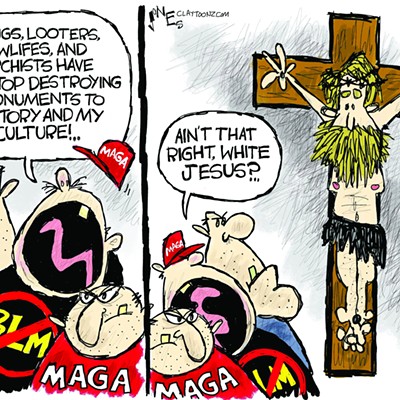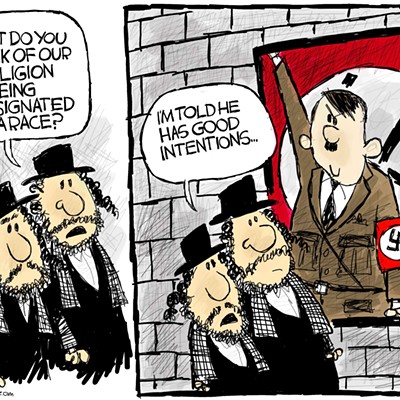No doubt these findings have sent a variety of responsive ripples running through our religious communities. The beauty of research is that its meaning is always tinted by the eyes of the beholder. Some churches will ignore the study, dismissing it as simply one more indication that our society is in the car pool lane, transmission in overdrive, speeding toward hell.
Others will read the report and see it as a criticism of the church's ability to be relevant. They will respond by perking up recruiting efforts, turning services into sideshows, translating poor numbers into marketing opportunities.
Some of these churches will open coffee shops in their basements or replace their choirs with dancing boy bands or orchestras like the ones heard on late night talk shows. Their clergy will mix more stand-up routines into sermons. Congregations will sing Amazing Grace to the tune of House of the Rising Sun. There will be much new paint slathered over rotting boards.
I skimmed the report and set it aside, more concerned with trying out the cable television system we'd just had hooked up. I flipped through a few channels, finally settling on an NFC football game. One of the teams represented the state where I lived before moving to Arizona. I hadn't followed the Minnesota Vikings for a couple of years. After only a quarter, I was bored. Something was wrong. Changed. Uncomfortably different. I switched off the set, went outside and stared off into the desert.
That's when it hit me. A minor epiphany. The lack of interest I had in the football game had the same root as the sagging interest in religion. The football team didn't look any different. Same uniforms, same stadium, same atmosphere and they were playing by pretty much the same rules. But, what was inside the uniforms was different.
Free agency and ballooning salaries now meant that players moved around. The face of most teams now changes dramatically over the course of even a single off season. After just two years, the home state team I had known so well had only a couple of names I could recognize.
Diehard fans still come to the games. It's probably out of inertia, but these fans still think of the team as their own. Despite needing a printed program to see who's teeing up the ball. One sports writer calls this phenomenon "cheering for laundry." The uniforms, the coverings are the only remaining tie to a meaningful history. There is no longer a connection to whatever may be living inside the uniforms.
The same thing has happened to religion. What we most often call our western religions--Christianity, Islam and Judaism--are religions of the desert. Trouble is, they are religions not of the Sonora but of the Sinai. They sprung from a different place, a different time, a different world. And the current institutions have done little if anything to adapt them to their new surroundings. The hierarchies have clung to old ways without reinterpreting religious essence in the context of where and who we are now.
And people have drifted away while churches remain anchored elsewhere. All religious language, verbal and unsaid, is symbolic. At one time, the purpose of religion was to lead members of the communities into a religious experience. Now, long distanced from the environment, societies and world views from which they sprung, we are left with the uniforms and gestures that deliver little or nothing of the experience or life that was once in them.
If churches are looking to up their numbers, it may be time for them to take some long standing "religious" advice and repent. The word repent is translated from the Greek word metanoia, and is not a reference to abject sadness over some misbehavior. It is a call to turn around and refocus our attention. To look inward, in silence with neither fear or desire, and reconnect with the spiritual reality that transcends words and gestures. And then to reinvite present and potential members to join the church hierarchy in active engagement with the experience toward which all things religious point. To begin to reinterpret these somewhat dusty traditions in the context of who, what and where we are now.
These days, we tend to see every problem as a marketing challenge. Treating symptoms over cause. When consumers turn their backs on a product, the response is new packaging and positioning. What is needed in religion is a look at the product. A return to what was once its core business: personal experience of inner connection expressed into the world, rather than behavioral modification.
This would mean a reinterpretation of the source of religious authority. It would require tossing open the windows of what has become religious tradition and letting a little fresh desert breeze rustle things up. But in the end, that fresh air may do a lot more for revivifying religious symbols than adding a dance line or DJ to the 10 o'clock service.












